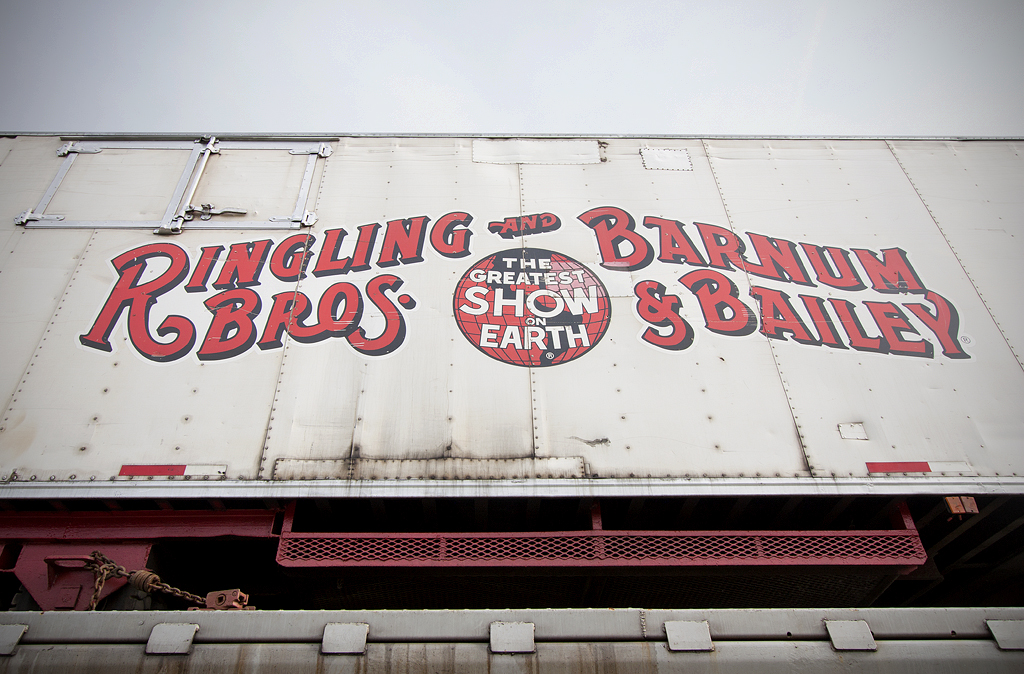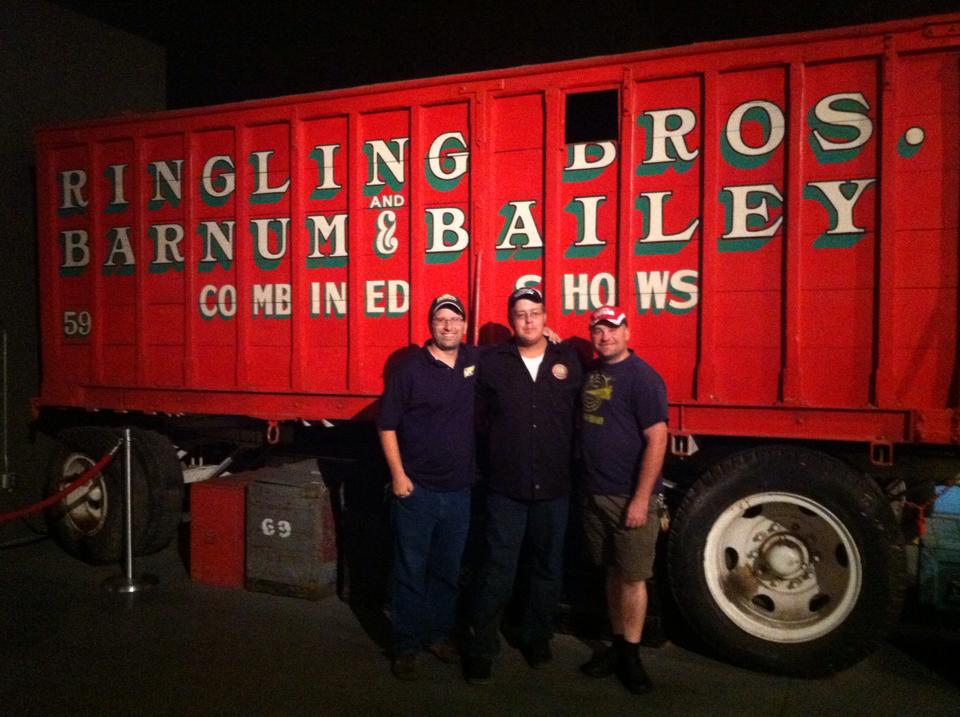Trains News Wire recently had the opportunity to talk with several Ringling Bros. and Barnum & Bailey circus train workers, including three former trainmasters.
Brett Goertemoeller, a former chief mechanical officer and trainmaster on the company’s Blue unit, says the opportunity to join the circus came at a time when he needed to start fresh in life.
“Ringling gave me that fresh start and life reset,” he says.
And it was a decision he did not regret.
“Watching the looks on the faces of the kids as we rolled through small towns — seeing almost all of the U.S. by rail,” says Goertemoeller when asked about what he appreciated most about his time on the train.
Goertemoeller, a steam preservationist, spent three years on the train. He appreciated the opportunity to be a part of its unique culture and to experience America by rail.
“There were over 200 talented people on the train from over 30 countries. They did everything from strong men to dancing,” he says. “Some of the best experiences were the times we were all hanging out having guests at the train for barbecues. Just to see the awe on everyone’s face as my wife and I welcomed our guests to our home – on the train.”
“No one ever comprehended just how huge that train really was… is,” Goertemoeller says.
Kyle Stockman, a friend and former co-worker of Goertemoeller, shared similar highlights.
“Just seeing their looks of overwhelming joy was the best part of the job,” says Stockman when reflecting back on trips through small, rural towns across America.
Stockman says he found Ringling Brothers when he was looking for a job in the rail industry.
“I ended up applying and was given a job the next day,” recalls Stockman. “At the time, I had no idea what to expect from the job, but it was definitely the best thing I have ever done in my life.”
As a rail enthusiast, Stockman appreciated being able to see the country from the vestibule of a train. It wasn’t just the passing scenery that made his tenure on the circus train memorable — it was also the people.
Unlike any other job in his life, Stockman says the family-like experiences on-board the train is what made the experience worthwhile.
“The family atmosphere that existed on the train and the fact that we all loved and traveled together definitely made it unique,” says Stockman. “Coming from a small town in Vermont, I never in a million years would have thought I’d have the opportunity to be apart of the operation…”
Stockman left the circus in 2015 and now resides in California where he is a steam mechanic and employee of the Mendocino County Skunk Train. Regardless of where Stockman’s interest in railroads takes him in the future, he says he will always be honored to have worked on the ‘Greatest Show on Earth.’
Joe Colossa, a former trainmaster and fourth generation circus worker, started out as a popcorn vendor in concessions before becoming assistant trainmaster and finally – trainmaster.
Colossa, like others interviewed, says breathtaking scenery and the culture of the train made it a job like no other.
“There are many different cultures represented on the train. You pick up some words in different languages and you get to taste wonderful recipes from around the world,” says Colossa.
When asked about some of the challenges he dealt with while managing railroad operations and personnel, he says it’s relatable to that of a small community.
“The train is home – it’s not just a vehicle to get from point A to B. You would have the same challenges on the train that you might find in a small community.”
Aside from dealing with on-train issues, Colossa says the biggest challenge was working with the railroad.
Colossa says that circus trains are moved as extra trains, oftentimes having to dodge freight rail traffic while moving to another destination.
“Very challenging sometimes, especially when you only have, for example, three days to cover 1,200 miles to get to the next city.”
Despite those on train logistics and other issues, Colossa says the circus train was a way of life that he misses dearly.
“I’m fourth generation in my family to be around the circus. So being there and being a part of it was like nothing else on earth for me,” he says.
Colossa spent 14 years with the train, including 13 years on the Blue unit and one year on the Red unit. He recently left the company to partner with others in acquiring the Al Ringing Mansion in Baraboo, Wis.
Both of the Ringling Brothers and Barnum & Bailey Circus trains will be retired by late May of this year. The fate of the more-than-120-car collection is to be determined, though in a recent news conference, Feld Entertainment managers say the disposition process would begin in the next several months.
















My LIRR commutes from around 93 to 2010 were often via Hunterspoint Avenue station in Queens; whenever this great circus was at the Garden, the red train laid up a few tracks away from the remains of a platform at HPA station where I could see the train stretched out into the distance, then got to watch as our train very slowly pulled out killing time due to the puffed up schedule; that was the one time of year I didn’t mind the delays. And once I got to watch some of the unloading, the trailers rolling from flatbed to flatbed and then down the ramp at the west end of the train. Really neat to see it.
This May I’ll be taking my family to one of the final group of performances at Nassau Colliseium. Not that we can afford it, but we needed to see this great circus one last time. BTW, if anyone knows where the train will lay up for it, and how to legally see it, please post it!
A number of years ago while they were parked in the Union Pacific yard at Council Bluffs, Iowa they helped thin out the wild turkey population. There was quite a flock of nice corn fed turkeys which inhabited the yard prior to the trains arrival. The flock was noticeably depleted on their departure.
This is so sad, I have seen this train many times over the years, also inspecting and seeing that the animals got watered. I retired from NS RR in Chattanooga in 2003, spent 34 years there also, lots of stories about when we serviced the train as well–LOL All good. I now have my own consulting business and get to see a lot of places, and do a lot of travel as well.
I just had a thought…Field should consider contacting AEG about buying the Circus in it’s entirety, and then AEG should do it and only run one of the trains….yes, cut the circus down to just one show and send that one around the country, it could rotate around the US over a 4 year period by dividing the US into 4 zones(or 6 if needed, and why not add Canada too)…i.e., the Northeast, Southeast, Northern Midwest, Southern Midwest, Northwest, Southwest, Western Canada, Central Canada and Eastern Canada…I have some other ideas, but most people would consider those fantasy, not seeing the marketing value.